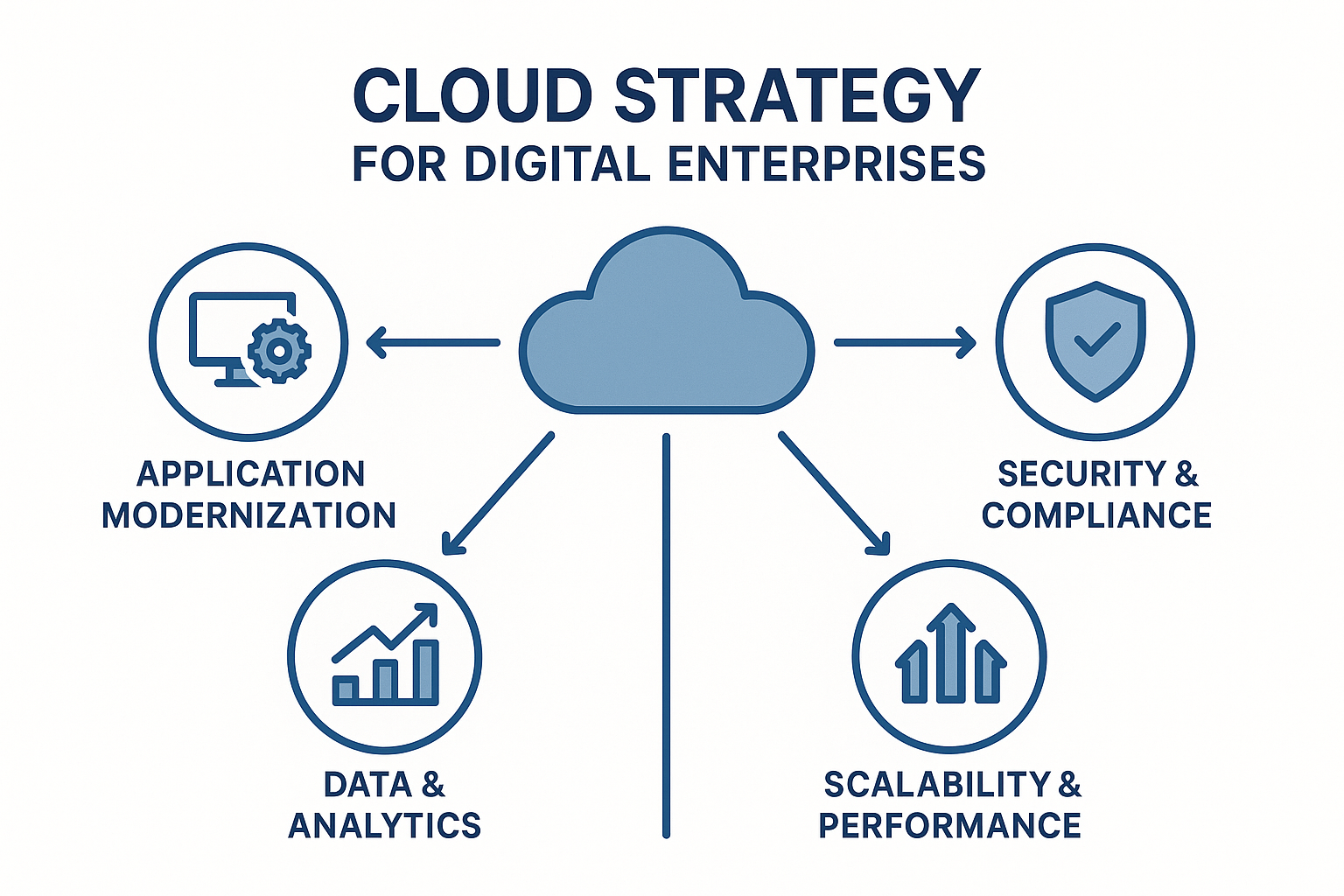Cloud is no longer just infrastructure. It’s the operating model for modern business.
What Is a Cloud Strategy?
A cloud strategy defines how an organization will adopt, govern, manage, and scale cloud technologies to support its business objectives. It’s more than choosing a vendor—it’s about aligning cloud capabilities with core business needs.
A sound cloud strategy answers:
What workloads move to the cloud—and why?
How does the cloud support business growth, speed, and innovation?
What governance, cost, and risk structures must evolve?
Why It’s Vital for Digital Enterprises
Enables rapid experimentation, scale, and time-to-market
Reduces dependency on legacy infrastructure
Supports global accessibility and operational resilience
Facilitates AI/ML, big data, and digital product initiatives
Offers flexible cost models aligned to usage
Core Strategic Models
| Cloud Model | Strategic Role |
| Public Cloud | Agility, scalability, global reach, SaaS/PaaS use |
| Private Cloud | Control, compliance, legacy app hosting |
| Hybrid Cloud | Balance of innovation with regulatory needs |
| Multi-Cloud | Avoids vendor lock-in, optimizes across platforms |
Modern strategies often embrace Hybrid + Multi-cloud to blend flexibility, risk management, and performance.
Strategic Pillars of Cloud Success
Workload Rationalization: Evaluate what to migrate, rehost, refactor, or retire
Security and Compliance: Embed identity, access, and encryption policies by design
Cost Governance: Establish FinOps for visibility, budgeting, and accountability
Automation: Use infrastructure-as-code and CI/CD pipelines for speed and consistency
Cloud Center of Excellence (CCoE): Drive standards, upskilling, and enterprise-wide enablement
Challenges and Pitfalls
Uncontrolled sprawl without centralized oversight
Underestimating migration complexity
Inadequate cost tracking or optimization tools
Talent gaps in cloud-native skills
Not tying cloud metrics to business KPIs
Conclusion
A cloud strategy is not about technology—it’s about transformation. The right cloud approach becomes a business enabler, giving enterprises the speed, scalability, and flexibility to stay competitive in an unpredictable digital landscape. When executed well, cloud is the backbone of innovation and growth.





